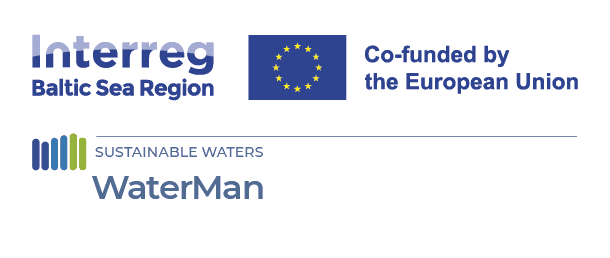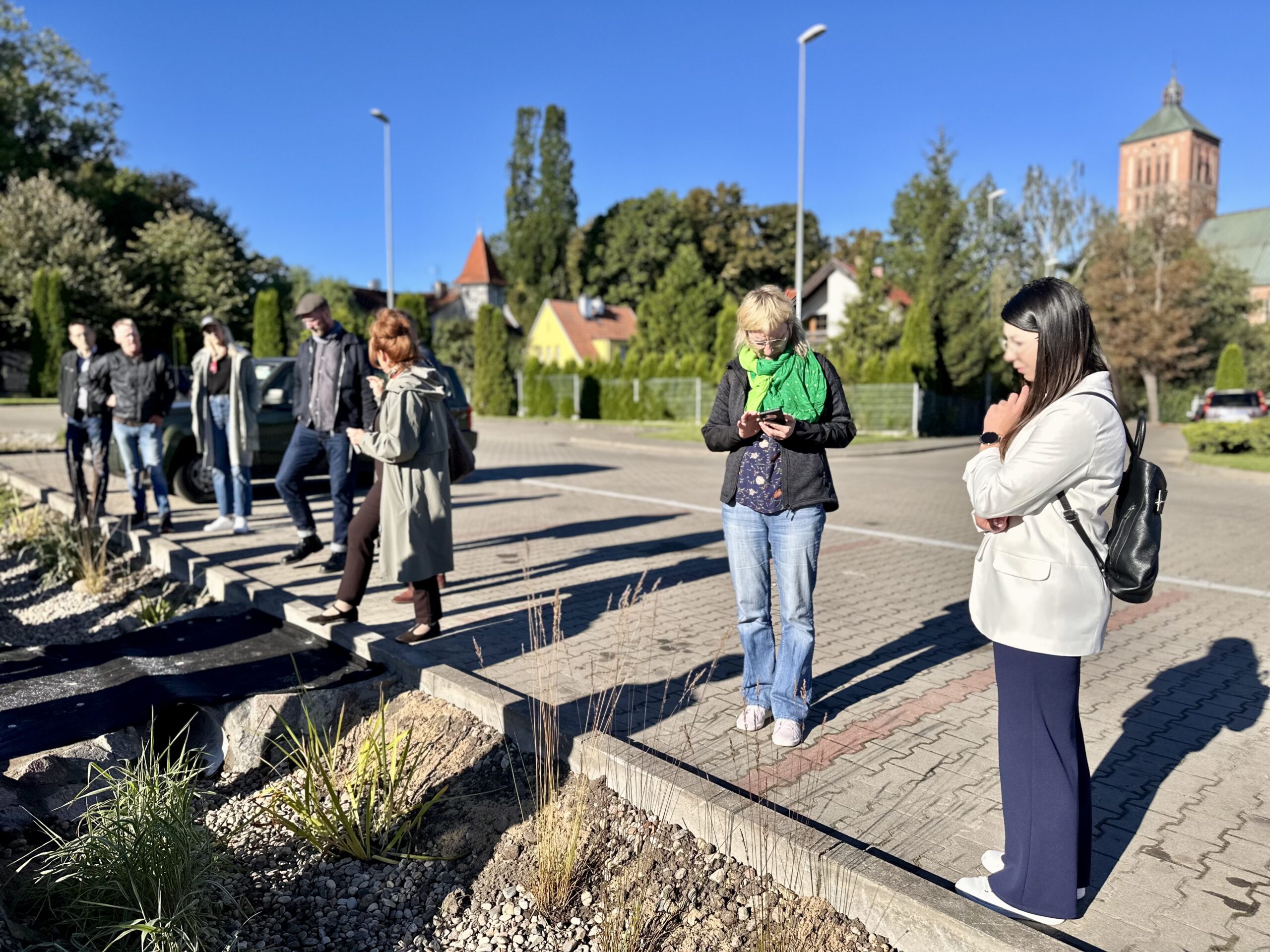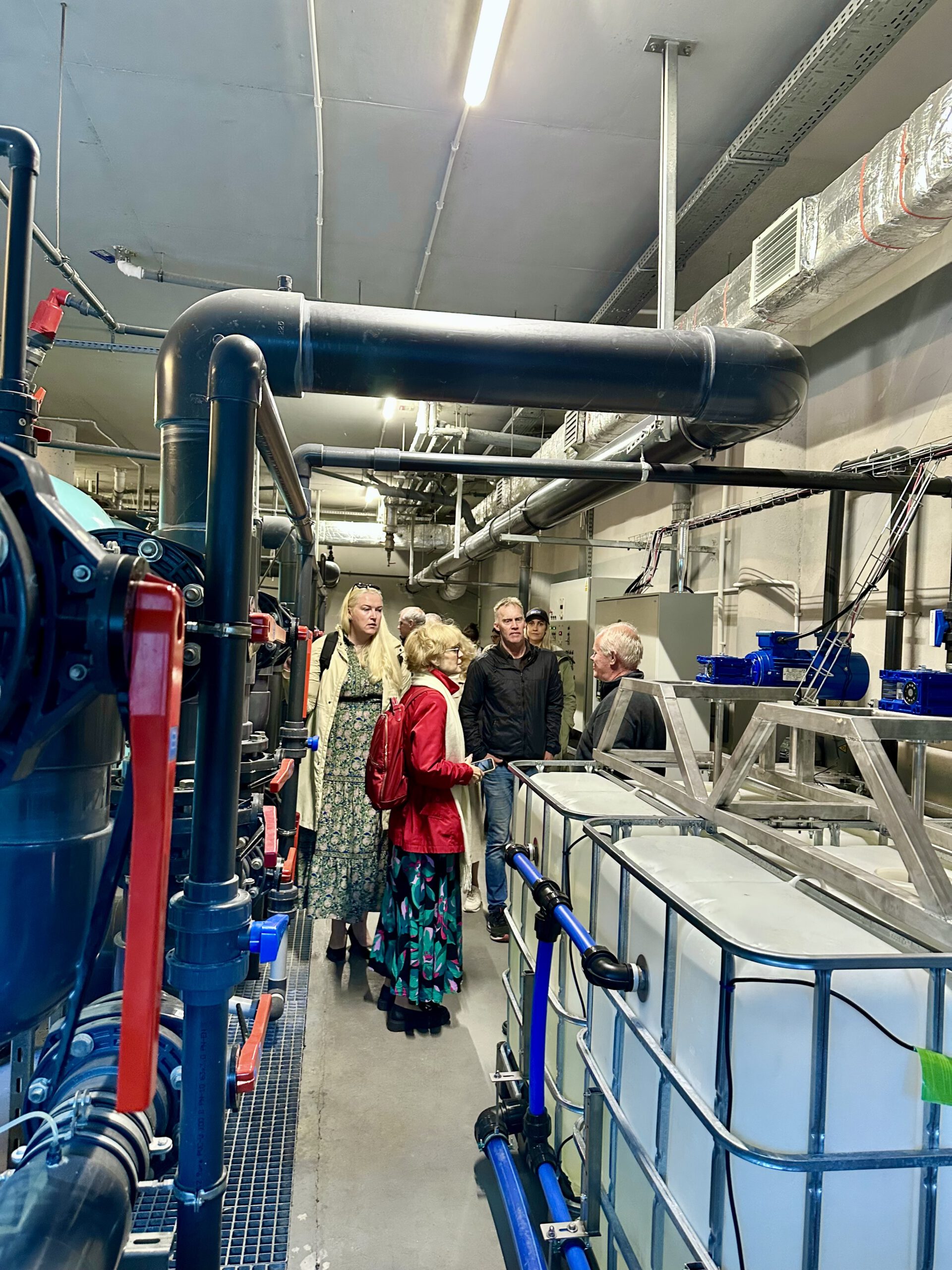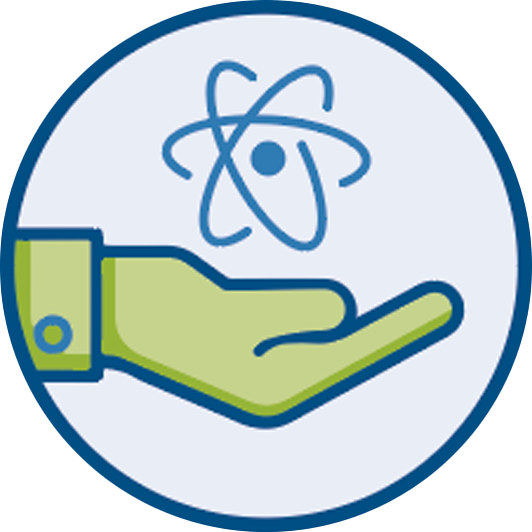
Harvesting the Results
29 September 2025
Projected on the wall behind the speakers are the words “Welcome by the Host”, alongside the logos of Gdańsk University of Technology, Euroregion Baltic, and the code of arms of the City of Braniewo. As Mayor Tomasz Sielicki delivers his welcome address, the audience’s eyes are drawn to the impressive high ceiling of Elbląg’s town hall – a space that seems made for open thinking and ambitious ideas. Perhaps it really does take a room like this for people to voice bold visions without hesitation.
Dozens of delegates from seven countries and regions around the Baltic Sea are seated around the long tables. Municipalities, local water companies, research institutes, and policy experts are in the audience when project coordinator Jens Masuch takes the floor. He reminds everyone of the symbolic meaning of this location: “It was right here, five years ago, that the WaterMan idea was born out of a meeting of the Water Core Group of Euroregion Baltic, and now we are back here for our second-to-last, and most decisive, gathering.” Over the next three days, he explains, the group will share the project results internally, refine their findings where needed, and prepare to spread the word, making it easier for others in the Baltic Sea Region to get started with water recycling.
The unofficial motto: just get started

Image credit: Jola Olszewska / APC ERB
Back in 2020, WaterMan began with an informal but powerful motto: “Just get started.” The idea was simple: implement tangible, local water recycling solutions using existing technologies, tailored to regional conditions, and wherever possible, designed to be low-cost and low-maintenance. As discussions evolved, another insight took shape: The Baltic Sea Region needs its own distinct approach to water management under changing climate conditions. Floods and droughts, once seasonal extremes, are now recurring realities. The challenge – and opportunity – lies in addressing both ends of the spectrum together. Stormwater is a challenge that needs to be managed, and at the same time, it can be an important resource for stabilizing local water supplies, alongside the reuse of wastewater. Fast forward to today. The next three days in Elbląg promise to be dense with presentations, and the agenda begins with a rapid status round among all partners. It quickly becomes clear that the early ambitions were not too lofty. Two and a half years on, those ideas have taken very real shape and were turned into facilities, systems, and lessons learned whose benefits are tangible, replicable, and public. At the forefront stands Kalmar Region in Sweden. A team of Kalmar Municipality led by Klas Eriksson from the municipal gardening department were quick to launch the project’s first operational real-world pilot in the summer of 2024: recycling municipal wastewater to irrigate public green spaces. “We now have a fully functional, container-based system that’s plug-and-play – ready to be replicated by other municipalities and adaptable to different needs,” the moderator sums up approvingly.
The tone for the meeting is set: pragmatic optimism – and also a bit of pride that the ideas turned into functioning real-life solutions, despite all challenges and obstacles along the way.
Much has been achieved and there is more to be done
Over the next hours, one region after another steps forward to present its results, each followed by a Q&A session with all partners and suggestions on how to further refine them from expert Veronika Zhiteneva from Waterloop Solutions, who joins via video link. Each presentation closes with a brief wrap-up by coordinator Masuch, who highlights the unique contribution of each pilot measure to the broader vision of bringing water recycling in the Baltic Sea Region into wider practice.
A few snapshots:
- Gargždai, Lithuania – a textbook example of peer learning. Inspired by the Swedish City of Västervik, the team developed a similarly low-threshold stormwater retention solution, a rather simple basin with tap points for recycling. In Lithuania, this approach had to be adapted to a national context where such concepts were entirely new and now the first pond ever has been created!
- Saldus, Latvia – here, plans for an underground stormwater reservoir with integrated water treatment aimed to supply a new public fountain in the town square. Budget constraints turned the pilot into a feasibility study, but one that delivered a fully engineered, transferable concept. Proof that even when construction is postponed, knowledge still flows.
- Berlin, Germany – In a large metropolitan area, the scale alone poses challenges, and with regulatory caution running deep, water recycling is not an easy sell. Instead of rushing ahead, the Berlin Center of Competence for Water chose a scientific route to provide a solid basis for decision-making: a data-driven feasibility study testing the reuse of treated wastewater from a large plant as cooling water for a nearby power station. Hard evidence, rather than enthusiasm, will convince the key decision-makers.
And there are many more successful or promising examples.
Of course, some questions remain. Following the presentations, the project partners and expert Veronika Zhiteneva raise a few of them:
- Have you also conducted microbiological analyses of the water?
- What do you do with the storm water in winter?
- What happens to the underground retention basins when temperatures drop below zero?
There is still a lot more to think through and work on.
Here today, in the large meeting hall of the Elbląg municipality, there is a strong sense of mutual recognition and appreciation. A great deal has been achieved in two and a half years of WaterMan. Still, the partners are jointly searching for ways to further improve, just as they did during the previous half-annual peer review sessions that accompanied their local work.
As Tobias Facchini from Region Kalmar County, the Lead Partner of the project, puts it: “What really stands out in WaterMan is the way that, right from day one, everyone has been eager to exchange and learn from each other. In more than twenty years of project work, I’ve rarely seen collaboration on this level. We could simply enjoy the results now, but instead, you still want to discuss and refine them — and that’s what makes this project so exceptional.”
Letting knowledge trickle through
That recognition is set to become even more tangible the next day, with an on-site visit on the agenda. The group boards a bus to visit the pilot measures in Braniewo, about 40 kilometres away, home to both a rain garden and an innovative swimming-pool water recycling system. Braniewo, only a few kilometres from the Russian exclave of Kaliningrad, might seem geographically peripheral, yet today it’s at the centre of attention. Waiting at the local pool are not only the international WaterMan partners but also regional and national stakeholders. These visits, called Demo Visits, are an integral part of the WaterMan approach: ensuring that new insights “trickle through” into the national expert communities and decision makers.
Speaking of trickling – on arrival, the newly completed rain garden immediately catches the eye. Stretching across the car park, its natural topography with gentle basins of stone and vegetation capture runoff from the asphalt and allowing it to seep slowly into the ground. The feature adds functionality while breaking up the otherwise monotonous tarmac of the site. Three days ago, when it finally rained properly again after a long dry spell, Jerzy Butkiewicz grabbed his smartphone and set off straight away. He has been involved in the project from the very beginning on behalf of the City of Braniewo, and as soon as the first drops began to fall, he was there to record a video. And sure enough, just as intended, plenty of water flowed from the surrounding asphalt surfaces into the basins. There, it is retained by the soil structure and slowly released into the groundwater.

Image credit: Agata Olszewska / Braniewo Municipality
Magdalena Gajewska, from Gdańsk University of Technology, who advised the municipality on the design of the raingarden, explains: “People often put too much emphasis on the ‘garden’ and too little on the ‘rain’. The key is smart hydrological design. Understanding slopes, soil types, and flow patterns.” To achieve the desired storage and cooling effects, it is essential to develop carefully thought-out concepts for water management. The key is to make smart use of the existing topography. Ideally, rain gardens should be created in locations that already have a slight natural slope. The pilot project in Braniewo also integrates aspects of “water and climate literacy.” Visitors can learn more about the project via informational panels mounted on a wall at the edge of the parking lot. In the future, school classes will receive a short, hands-on teaching unit on the topic of “Water management in the Baltic Sea Region in times of climate change” before or after their swimming lessons. The pressing issues of our time are made very tangible here by using the examples of the rain garden. Illustrated through infographics from the WaterMan project.
Following the natural slope down the parking lot, the group moves towards the public pool, where the second pilot awaits: a system that recycles pool water for other uses around town. Together with the nearby rain garden, this creates an integrated and instructive pilot site where interested visitors can see two quite different examples of water recycling – each working independently yet complementing each other within one location.
From test runs to mindset shifts
In front of a gate in the basement of the building, the group of visitors comes to a halt. Behind the steel door lies what could best be described as the building’s engine room: the swimming pool’s main filtration system. Recently, this technical heart of the facility has been complemented by a new addition tucked away in one corner. A significantly smaller unit, yet one with potentially far-reaching implications. It’s a pilot system designed to recycle swimming pool water for entirely different, external purposes. At this point, WaterMan is venturing into truly uncharted territory. While the idea of reusing pool water may have been floated in various forums before, it has never been tested systematically – until now. This makes the site in Braniewo a first of its kind.

Image credit: Agata Olszewska / Braniewo Municipality
“We’ll be starting the test run next week,” explains Krzysztof Czerwionka from Gdańsk University of Technology, the lead engineer in charge of the installation, addressing the group of visitors standing in front of the system. “And then we’ll soon know more.” Confidence in the technology is already high. “We’re convinced it will work – and hopefully at an even larger scale in the future,” he adds. For example, beyond recycling the water for rinsing the filters of the pool, which the pilot plant focuses on, shower water could be reclaimed as well. But that leads directly to one of the main structural challenges of water recycling in existing buildings: “As things stand, the shower water is mixed with toilet wastewater in the same pipes,” he explains. “To make systems like this more efficient, we’d have to rethink how we design public buildings from the ground up.”
In other words, small local loops for water recycling like this one should ideally be integrated right from the planning stage when new swimming pools are being built. The infrastructure doesn’t just require technology, it also needs space. That’s why forward-thinking design is not only more practical, but also far more cost-effective than retrofitting existing facilities later on. This was something that only became apparent during the design of the real-life pilot; on a purely conceptual or laboratory level, it might not have been detected. It shows the concrete added value of WaterMan: by enabling real-world pilots, the project helps uncover such practical insights.
Convincing people and organisations to actually use recycled water – that, too, can be a challenge. Just next door to the swimming pool lies the football pitch of the local sports club. On paper, it seems the perfect match: in dry summer months, the pitch could be irrigated with recycled pool water. But for now, that idea has stalled. The supplier of the new turf declined, the project lead explains. The company only guarantees the quality of its product if the irrigation is done with drinking water. Eva Jekobsone from Lithuania responds with a knowing smile, as the situation seems all too familiar: “You have to convince stakeholders drop by drop.” A perfect metaphor, as starting next week, the pilot system will begin delivering recycled water that’s set to meet the desired ‘quality standard. And when the next dry spell arrives, perceptions may well start to shift.
“Drop by drop” could also describe the rest of the day’s programme, designed to build understanding just as patiently. In the afternoon, participants gather at the Cultural Centre in Braniewo for a panel that is jointly hosted by the Association of Polish Communes Euroregion Baltic and the city. There, in front of a larger national and international audience, a range of nature-based water recycling projects from across Poland are presented and discussed. The day concludes with a visit to the Braniewo brewery, before ending the day at the traditional restaurant Spichlerz z Fantazją, where the evening flows as smoothly as the water-themed conversation.
From “if” to “how”: Water recycling enters a new phase
Despite the lively atmosphere the night before, all project partners arrive refreshed and on time at 8a.m. sharp for the final session of the meeting. It’s the grand finale of these three intensive days in Elbląg and Braniewo. All participating regions are presenting the final drafts of their model strategies for water recycling. The aim is clear: to provide well-founded answers to key questions. What water recyling pathways are being pursued – and why? How are these choices informed by local climate data, geological conditions, available water sources, and, most crucially, by the configuration of regional stakeholders? Who might be interested in which water qualities? Which stakeholders still need convincing? What legal hurdles remain? And what impact do pilot projects and feasibility studies have within these contexts?

Image credit: Jola Olszewska / APC ERB
Although the local circumstances vary widely, there is one answer that applies across the board: the pilot measures are making water recycling tangible and credible. They are lowering barriers and slowly changing ingrained habits – in the right direction. Jens Masuch sums it up: “As soon as first concrete examples were in place – as we’ve already seen in Kalmar – the debate around water recycling is shifting from if to how. And the pilot measures within WaterMan project have played a key role in this transition.”
Another recurring theme is the search for a viable business model and effective incentives for recycled water. In many countries, introducing a pricing structure for different water quality levels below drinking-water standard is facing regulatory obstacles as the legal framework is still missing. It’s one of the key issues that will be included in the policy paper WaterMan is preparing to contribute to water-related policy discussions at both EU and national levels, and which will be presented at a Roundtable Discussion in Brussels in November.
A great deal has already been achieved in the partner regions of WaterMan. The pilots show that water recycling is not only possible today, but that it is high time to start. The strategies developed within the project point the way forward. What remains now is to share these results and inspire others to follow suit, the main focus of the final project phase running until 31 December 2025.
As the meeting in Elbląg so vividly showed, when ideas are given space – and room to flow – they can travel far.
About the “WaterMan” project
Due to climate change, periods of drought are becoming more frequent in the Baltic Sea Region and drinking water, which is mainly obtained from groundwater here, can get scarce in certain periods. For that reason it will be necessary to use water of different qualities and to tap into other sources of “usable water” in the future. “WaterMan” supports municipalities and water companies in adapting their strategies. A region-specific approach to water recycling uses the alternation of too much and too little water, which has become typical in the Baltic Sea Region, to make the local water supply more resilient.





